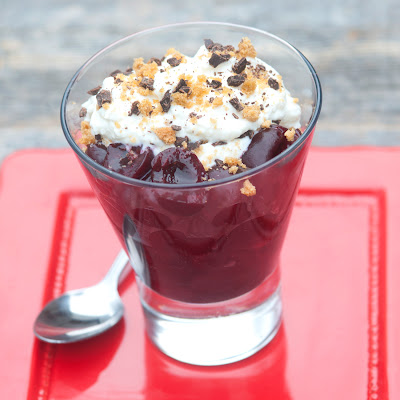 Up until last week, the closest I had ever gotten to a cherry orchard was reading Anton Chekhov's masterpiece, The Cherry Orchard. And if you're familiar with that play, you know it doesn't end happily for the family or the cherry trees.
Up until last week, the closest I had ever gotten to a cherry orchard was reading Anton Chekhov's masterpiece, The Cherry Orchard. And if you're familiar with that play, you know it doesn't end happily for the family or the cherry trees.
Thankfully, life is much happier in the state of Washington, especially the Leavenworth region, where scores of cherry orchards heavy with fruit line the highways.
A fully fruited cherry tree is gorgeous — the clusters of cherries are dramatically suspended from branches, like firework starbursts.
Despite having eaten over three pounds of cherries in three days while we were in Washington, we're still craving them.
So last night I made Smashed Cherries, Amaretti and Ricotta, a delightful, no-cook summer dessert from Cheryl Sterman-Rule's new cookbook, Ripe: A Colorful Approach to Fruits and Vegetables. I had tested this recipe for Cheryl last year and have made it numerous times since. No doubt, you will too.

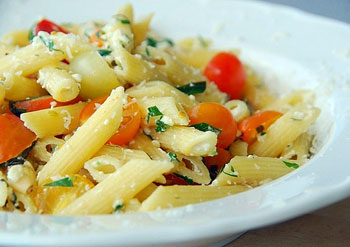 If the farmers' market were giving out superlatives, heirloom tomatoes would get "most popular." No contest. Today there were several different farmers selling them from $5-7 per pound, and each table had a line of people at least four deep waiting to buy some.
If the farmers' market were giving out superlatives, heirloom tomatoes would get "most popular." No contest. Today there were several different farmers selling them from $5-7 per pound, and each table had a line of people at least four deep waiting to buy some.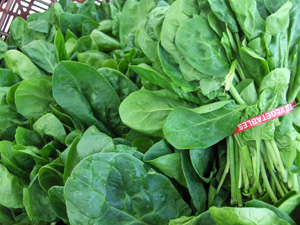 Everyone has an all-purpose dish that can be modified in clever ways by changing a few key ingredients. For my mother, it was the casserole. For me it’s usually pasta but on those nights when my wife wants to “go green” I turn to an old stand-by: a wilted spinach salad.
Everyone has an all-purpose dish that can be modified in clever ways by changing a few key ingredients. For my mother, it was the casserole. For me it’s usually pasta but on those nights when my wife wants to “go green” I turn to an old stand-by: a wilted spinach salad.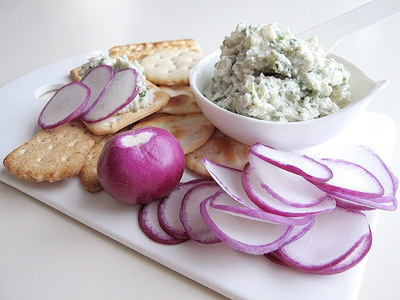 I love the crunch of radishes. It's a sound that resonates with all the radish-lovers in my family especially my mother, the biggest lover of the crunchy root vegetable. I learned to love radishes form her. At first I didn't appreciate their mild, earthy flavor, but then I came to love them more for their watery crunch. Then I discovered they could also be spicy and peppery. I have been an aficionado for many years now. Every spring I look for the best and brightest ones.
I love the crunch of radishes. It's a sound that resonates with all the radish-lovers in my family especially my mother, the biggest lover of the crunchy root vegetable. I learned to love radishes form her. At first I didn't appreciate their mild, earthy flavor, but then I came to love them more for their watery crunch. Then I discovered they could also be spicy and peppery. I have been an aficionado for many years now. Every spring I look for the best and brightest ones.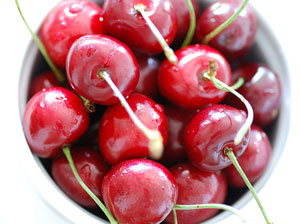 For the last couple of weeks, I have been unusually happy. It's not the weather or exercise or Prozac. It's cherries. Here's the deal with cherries: their season is ridiculously short, their price is ridiculously high, but the flavor is ridiculously delicious. Who can deny the pure pleasure of eating a sweet-tart, fresh, juicy cherry? It is prime cherry pickin' time. So here's what you need to know about selecting, storing, and cooking with cherries.
For the last couple of weeks, I have been unusually happy. It's not the weather or exercise or Prozac. It's cherries. Here's the deal with cherries: their season is ridiculously short, their price is ridiculously high, but the flavor is ridiculously delicious. Who can deny the pure pleasure of eating a sweet-tart, fresh, juicy cherry? It is prime cherry pickin' time. So here's what you need to know about selecting, storing, and cooking with cherries.
